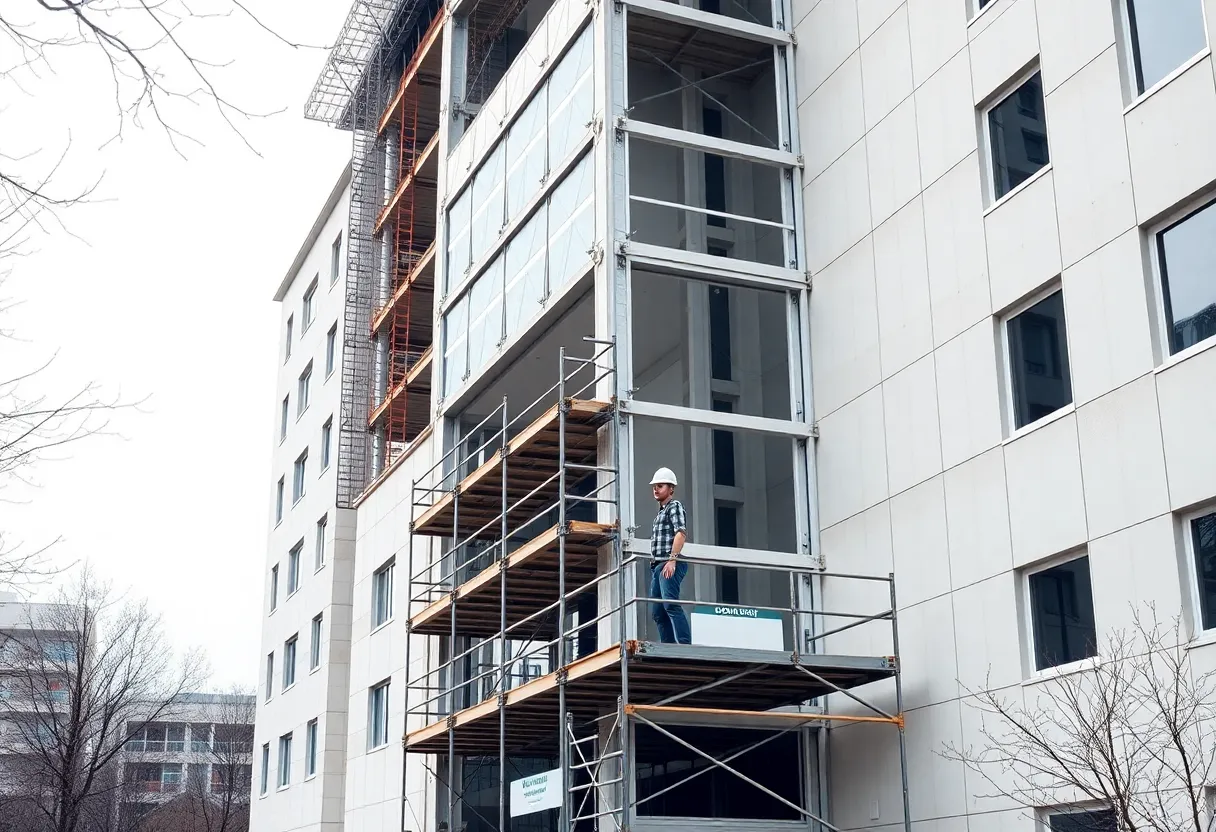Buffalo, NY, October 22, 2025
D’Youville University has invested $25 million in the development of its new medical school, focusing on enhancing healthcare education in Western New York. The funding will support facility upgrades and faculty recruitment, with the aim of enrolling the first class of students in 2027. The program intends to serve underserved communities and create job opportunities within the local healthcare sector. Collaborations with local hospitals will provide students with clinical training, addressing regional disparities in healthcare access and delivery.
D’Youville University Discloses $25 Million in Medical School Development Costs
Buffalo, NY – D’Youville University has invested $25 million so far in developing its new medical school, according to recent state filings. The funds have gone toward facility upgrades and faculty recruitment, marking a significant step in expanding medical education in Western New York.
Program Focus and Timeline
The medical school aims to address healthcare needs in underserved communities across the region. The program emphasizes training future physicians to serve these areas, with the first students expected to enroll in 2027. This initiative builds on the university’s existing health sciences programs, positioning it as a key player in local medical training.
Facility improvements include modernizing classrooms, labs, and simulation centers to meet accreditation standards for medical education. Faculty recruitment efforts have targeted experts in primary care and community health, aligning with the school’s mission to tackle regional disparities in healthcare access.
Partnerships and Economic Impact
Collaborations with local hospitals, such as Kaleida Health, form the backbone of the program. These partnerships will provide clinical training opportunities for students and integrate the medical school into Buffalo’s healthcare network. As a result, the project is projected to create 50 new jobs, including positions for educators, administrators, and support staff.
The economic boost extends beyond employment, as the medical school could attract additional research funding and draw more healthcare professionals to the area. Buffalo, known for its growing healthcare sector, stands to benefit from enhanced medical training capacity, potentially reducing physician shortages in rural and urban underserved zones.
Funding Challenges and Community Response
While the development has garnered support for its potential to transform Buffalo’s healthcare landscape, concerns linger about long-term funding sustainability. Rising tuition costs at private universities like D’Youville have prompted questions about how the medical school will balance affordability with operational expenses. Critics highlight the need for diversified funding sources, such as grants and endowments, to ensure the program’s viability without overburdening students.
Supporters, however, view the medical school as a vital investment in the region’s future. By focusing on underserved populations, it addresses pressing needs like access to primary care in areas with limited medical services. The university’s strategic location in Buffalo, a hub for healthcare innovation, enhances the project’s relevance.
Broader Context of Medical Education in Western New York
D’Youville’s medical school emerges amid a national push for more physicians to serve diverse and underserved communities. Western New York has faced challenges with healthcare provider shortages, exacerbated by an aging population and rural depopulation. The new program could help mitigate these issues by producing graduates committed to local practice.
The $25 million investment reflects careful planning, with state filings detailing allocations for infrastructure and personnel. Ongoing recruitment and construction phases will continue through 2026, preparing the campus for its inaugural class. This development aligns with broader trends in medical education, where schools increasingly prioritize community-oriented training.
Buffalo’s healthcare ecosystem, anchored by major institutions like Kaleida Health, provides a fertile ground for such initiatives. Partnerships ensure that students gain hands-on experience in real-world settings, from urban hospitals to community clinics. The 50 new jobs will not only support the medical school but also stimulate local economic growth.
Implications for Students and the Community
For prospective students, the medical school offers a pathway to a career in a high-demand field, with an emphasis on serving Western New York’s unique needs. Admission criteria will likely prioritize candidates interested in primary care and public health, fostering a diverse cohort reflective of the region’s demographics.
Community stakeholders anticipate improved healthcare delivery as more physicians graduate and stay local. The program’s 2027 launch timeline allows time for curriculum development and accreditation processes, ensuring quality education from the start. Despite funding debates, the initiative’s focus on equity positions it as a forward-thinking addition to Buffalo’s educational offerings.
In summary, D’Youville University’s medical school represents a bold commitment to enhancing healthcare in Western New York. With $25 million already allocated and key partnerships in place, the project promises lasting benefits, even as discussions on sustainability continue.
FAQ
What is the total investment so far for D’Youville University’s medical school?
$25 million so far for facility upgrades and faculty recruitment.
What is the focus of the medical school program?
The program’s focus on underserved communities in Western New York.
When will the first students enroll in the medical school?
Aiming for first students in 2027.
What partnerships are involved in the medical school?
Partnerships with local hospitals like Kaleida Health.
How many new jobs will the medical school create?
Promising 50 new jobs.
What concerns have been raised about the medical school?
Critics question funding sustainability amid rising tuition concerns.
How is the medical school viewed by supporters?
Supporters hail it as a game-changer for Buffalo’s healthcare landscape.
Key Features Chart
| Feature | Description |
|---|---|
| Investment | $25 million so far for facility upgrades and faculty recruitment |
| Program Focus | Underserved communities in Western New York |
| Timeline | First students in 2027 |
| Partnerships | Local hospitals like Kaleida Health |
| Job Creation | 50 new jobs |
| Concerns | Funding sustainability amid rising tuition concerns |
| Support View | Game-changer for Buffalo’s healthcare landscape |
Deeper Dive: News & Info About This Topic
HERE Resources
Golisano Institute Opens Applications for Fall 2026 Cohort
Buffalo Launches Rowing Initiative to Enhance Youth Diversity in Sports
Buffalo Health Leaders Secure $15 Million for AI Medical Project
Buffalo Public Schools Concerned About Federal Budget Cuts to Special Education
SUNY Buffalo State University Celebrates Enrollment Surge
Buffalo Employers Prioritize Mental Health Support Amid Rising Workplace Stress
D’Youville University Announces Departure of Dean of Osteopathic Medicine
Buffalo State University Experiences Significant Enrollment Growth
D’Youville University Faces Leadership Transition in Medical School
Governor Invests $10 Million in SUNY Buffalo’s Brain Research





